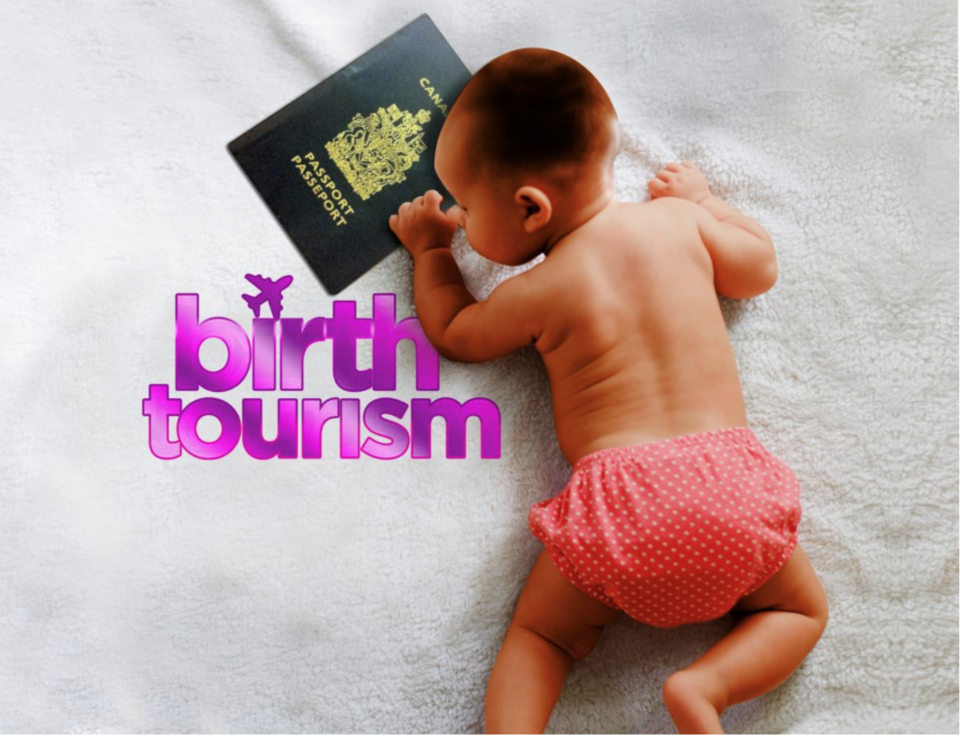Birth tourism has dropped to new lows in B.C. but the prospect of the Chinese government lifting pandemic travel restrictions could breathe new life into the once-bustling practice, says immigration policy expert Andrew Griffith.
“Chinese government travel-related restrictions are likely a significant factor in the reduced number,” wrote Griffith in Policy Options.
Between April 2021 and March 2022, B.C. hospitals recorded 110 non-residents of Canada who paid to give birth, based on data Griffith obtained from the Canadian Institute of Health Information (CIHI). Last year, 194 such births were recorded.
However, in the year prior to the pandemic, a record 868 self-paying non-residents — the vast majority of whom are understood to be Chinese nationals on tourist visas — garnered automatic citizenship for their newborns.
B.C. saw an 83.4 per cent decline in 2021, from its pre-pandemic five-year average of 661.
“Richmond Hospital — the epicentre of birth tourism with its supportive ‘cottage industry’ of ‘birth hotels’ — has been the hardest hit,” stated Griffith.
There, a 95.6 per cent decrease has been witnessed, compared to pre-pandemic levels — just 22 non-resident births this year, compared to 502 in 2019-2020. In fact, Richmond Hospital became the second-ranked hospital for such births in 2021-2022, as St. Paul’s and Mount Saint Joseph Hospital recorded 34 births.
For over a decade, non-resident paid births had been increasing every year in Canada until pandemic travel restrictions hit in March 2020. In 2019, 5,698 non-residents paid to give birth in Canada; in 2020, that number dropped to 2,433; in 2021, there were 2,245 such births — a 51.8 per cent decline from the pre-pandemic five-year average of 4,656.
One of the reasons why there were still over 2,000 non-resident paid births in Canada is because the data includes international students in Ontario, Manitoba and Quebec (in part), who are not insured in the public system. In B.C., international students are covered by the Medical Services Plan, hence they would not be recorded as paying non-residents. The same applies to refugees and temporary workers in B.C.
The sheer drop in non-resident paid births in B.C. reaffirms how much the practice was driven by Chinese nationals in B.C., says Griffith, former director general for the citizenship and multiculturalism branch at Immigration, Refugees and Citizenship Canada.
“The decline was particularly notable in British Columbia, where most birth tourists pre-pandemic were from China — a country most affected by travel restrictions. The drop is in stark contrast to steady increases over the previous five-year period.
“Visitor visas recovered to only 57 per cent of pre-pandemic levels in 2021-2022 while visas for temporary workers have more than recovered from pre-pandemic levels. Visitor visas for Chinese nationals, one of the major groups, have recovered to only 21 per cent of former levels compared to 57 per cent of previous levels for all visitor visas,” noted Griffith.
Nationality isn’t routinely tracked but a tabulation by hospital officials in 2016 showed Chinese nationals accounting for 98 per cent of non-resident births.
As for national figures, Griffith maintains it would be wise for health policy makers to differentiate international students, temporary workers and explicit birth tourists from one another where they are currently grouped as one, such as in Ontario.
For some time, national Statistics Canada data on non-resident births was underreported, as mothers would list their short-term maternity homes as their places of residence. The CIHI data, derived from hospital administrative paperwork, showed a much more extensive practice.
Given the data shows more explicitly that thousands of people are coming to Canada to obtain citizenship for babies, Griffith says the federal government should revisit its policy on non-resident births and Canadian citizenship based on the jus soli (born on soil) principle.
Given the cost of coming to Canada for the purpose of giving birth, Griffith notes the data demonstrates the non-resident women and families who give birth here “are largely the economically privileged rather than the more economically vulnerable.”
Griffith has previously noted that as travel restrictions ease “we can expect the number of non-resident births and birth tourists to revert to their previous growth. Should this happen, it will prompt further calls to restrict birth tourism.”
The federal Liberal government has not addressed the practice, which remains technically legal should a pregnant woman declare her intentions at the Canadian border. The practice has prompted protests and petitions from citizens.
Unlike Canada, the U.S. charged birth-house operators in California with money laundering, fraud and identity theft, via coordinated efforts from federal and local authorities.
Birth tourism has drawn in money for hospitals, especially Richmond, but in some instances, when births become complex, the hospitals can lose a chunk of their profits — such as when a $312,595 neonatal bill went unpaid, leading to a $1.2 million lawsuit from Vancouver Coastal Health.
Some data show paying non-residents spend less time in hospitals after giving birth. B.C. Health Minister Adrian Dix has previously dismissed concerns about healthcare delivery concerns, including the extent to which birth tourists have caused diversions for pregnant Canadian women.
This article has been updated with more background information on the birth tourism industry




